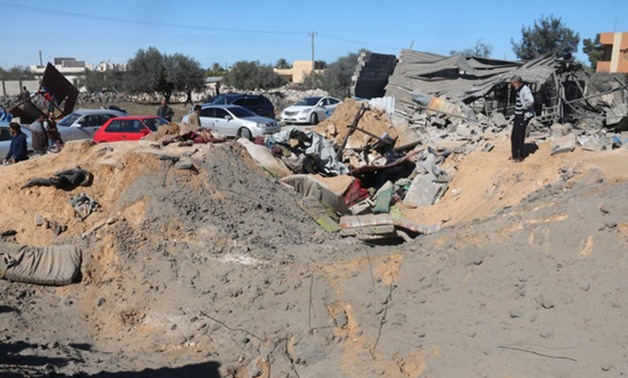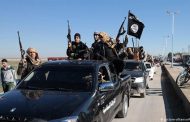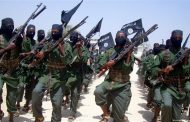As recurrent defeats of the Islamic State (IS) are taking place in Iraq and Syria, concerns about the potential destinations of its fleeing militants have started to arise. Members of the guerrilla group belong to different countries, which are very wary of their return.
There have been speculations that these fighters would head to Libya, despite many territories having been cleared of IS by the Libyan National Army (LNA).
Calls and actions to eliminate IS fighters
The Guardian reported on October 22 that British Minister of State for International Development and Minister of State for Africa at the Commonwealth Office Rory Stewart stated that all British IS fighters should be killed, because they pose a threat to British security and hold an “extremely hateful doctrine.”
The minister’s statements came during the BBC Radio 5 Live’s program Pienaar’s Politics as hundreds of British nationals have joined IS in Syria and Iraq. “These are people who have essentially moved away from any kind of allegiance towards the British government. They are absolutely dedicated, as members of the Islamic State, towards the creation of a caliphate,” Stewart added.
The Guardian also mentioned the statements of Brett McGurk, a top U.S. envoy for the coalition fighting IS, on the type of his mission, which is ensuring that “every foreign IS fighter in Syria dies in Syria.”
In France, the matter surpassed mere calls to taking actual measures in order to exterminate French IS fighters. An investigation by Wall Street Journal published in May revealed that French Special Forces sought the help of the Iraqi army to inhibit French nationals fighting with IS from escaping so they would not compromise the security of their homeland.
Hundreds of French citizens have joined the group since its rise to prominence in 2014. A joint military operation was assumed by the French and Iraqi forces, but no figures of killed French IS members were revealed. However, they announced that “up to 30 men had been identified as senior, ‘high-value’ targets.”
Rebuilding IS in Libya
LNA’s spokesperson, Col. Ahmad al-Mesmari, stated earlier in October that IS militants fled Syria to join other terrorist groups affiliated with al-Qaeda and the Muslim Brotherhood in the country, accusing Qatar of transporting them to southern Libya.
That fact was highlighted a few months earlier by U.S. military experts and officials. In March, Newsweek shed light on statements by U.S. defense officials that IS militants “are considering moving their de facto headquarters to Libya.”
The migration of militants has been happening internally in the country as well. Gen. Thomas D. Waldhauser, head of the Pentagon’s Africa Command, told a Senate panel in March that IS militants defeated in Libya had moved south, according to the New York Times. This is after their main headquarters in the country had been revoked by the LNA.
Waldhauser asserted that IS in Libya poses a threat to the interests of the U.S. and its allies in Africa, warning that militants are infiltrating Egypt, Tunisia and other North African countries. He added that the group facilitates “the movement of foreign fighters” and enables the “flow of migrants out of Libya to Europe and elsewhere.”
Fox News reported in July that the group “is believed to be regrouping and recruiting in the rural regions south of the main east-to-west coastal highway and in the far-west town of Sabratha, which is poised just 60 miles from the Tunisian border.”
Journalist Robert Young Pelton, experienced in conflict reporting, told the channel that Sabratha was selected by the group to be its new center, as they receive many recruits from Tunisia. Mesmari announced earlier that the group has recently established camps around 25 miles east of the town of Bani Waleed, as well as south of Sirte. He added that the number of IS fighters in Libya is between 5,000 and 7,000 from different nationalities.
Joseph Fallon, an Islamic extremism expert and U.K. Defense Forum research associate, commented on the risks incurred by the group’s presence in the North Africa country, saying, “It can jeopardize western interests through guerrilla warfare sabotaging Libya’s oil facilities and ports and through calculated use of terror to unleash a mass migration of people to destabilize neighboring countries and Europe.”
The area south of Sirte contains a great portion of Libya’s oil fields, known for optimum quality light crude, as well as major refineries. Despite the chaos the country fell into, its oil production jumped in mid-2017 to around 885,000 barrels per day, triple its production this time a year ago, according to Fox News.
It is worthy to mention that IS had taken over many oil fields in Syria, Iraq and Libya, selling crude oil in the black market as a source of funding. That practice had contributed to plummeting oil prices globally, causing a crisis for many oil-intensive economies worldwide. Former CIA Director Mike Morell told press in 2015 that IS sold roughly 100,000 barrels of oil a day from its former territory in Iraq and Syria for an average cost of $20 per barrel.








































admin in: How the Muslim Brotherhood betrayed Saudi Arabia?
Great article with insight ...
https://www.viagrapascherfr.com/achat-sildenafil-pfizer-tarif/ in: Cross-region cooperation between anti-terrorism agencies needed
Hello there, just became aware of your blog through Google, and found ...